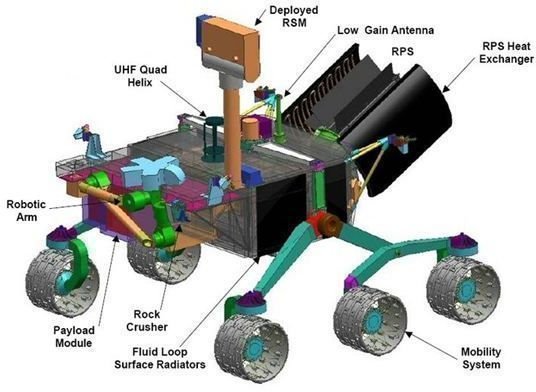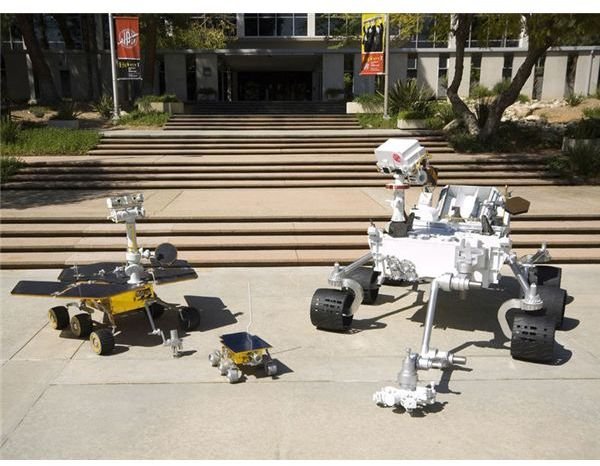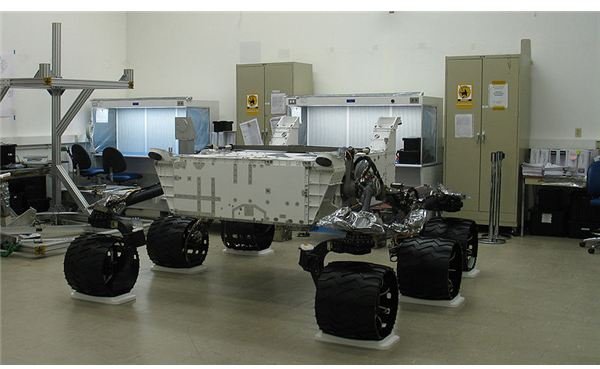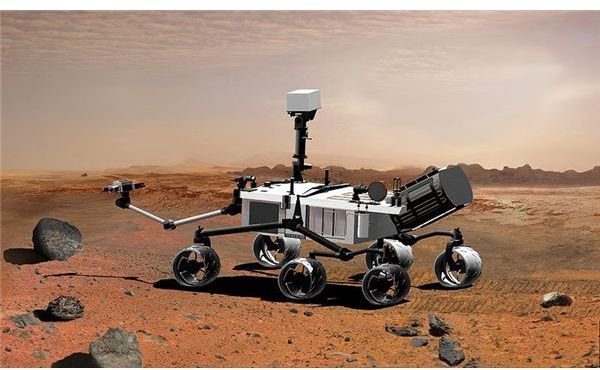The Next Mission to Mars: The Mars Laboratory Rover - Curiosity
Objectives of the Mars Science Laboratory
NASA designed the mission for the Mars Science Laboratory rover to accomplish a number of goals on the red planet. One of the main objectives is to determine if life is, or was present on Mars. In order to accomplish this, the rover will analyze the chemical components of the soil and air to find the basic building blocks of life: carbon, hydrogen, nitrogen, oxygen, phosphorus and sulfur. It will also inventory any evidence that shows biological processes. The rover will investigate the overall climate and geology by determining how the rock and soil present on the planet originated and make an assessment of the history of the Martian atmosphere. Curiosity will attempt to perform preparation experiments for a future human expedition, most notably testing the levels of radiation to which astronauts would be exposed.

Delays in the Mission
Originally, the mission was approved by NASA in September 2006 with a projected 2009 launch. However, two years later, the estimated budget for the project was expected to exceed the original budget by 24 percent or over $56 million. NASA was forced to make cuts from other projects in order to continue the Mars Science Laboratory. On December 3, 2008, NASA moved the launch date to late 2011 due to a number of problems with the design elements.
Speed of Curiosity


Compared to other NASA missions, the Mars Science Laboratory Rover is one of the most advanced scientific designs from the organization. While the Mars Exploration Rovers, Spirit and Opportunity were approximately five feet long, Curiosity will be roughly the same size as a Mini Cooper, measuring nine feet long and weighing 1,984 pounds, including an additional 176 pounds of scientific equipment. This means that Curiosity will not face the same challenges as the older rovers, it will be able to traverse the surface at 300 feet per hour and roll over obstacles over two feet tall. Over the course of its two year mission, its expected to explore a range of roughly 12 miles.
Powering the Rover
NASA has also learned from its experience of previous Mars missions by not utilizing solar panels. Spirit and Opportunity face ultimate termination due to the fact that the Martian dust will eventually cover the panels. Instead, NASA is using radioisotope thermoelectric generators (RTG), similar to the ones used on <em>Viking 1</em> and <em>Viking 2</em>, which landed on Mars in 1976. Essentially, the rover will be powered by radioactive decay, providing electrical power regardless of the light and dark cycle.
Computer Systems
In addition, the Mars Laboratory Science rover features the most advanced computer system ever sent to another planet. Learning from past computer failures, NASA has equipped the vehicle with two identical computers. Each features 256 KB of EEPROM, 256 MB of DRAM and 2 GB of flash memory. In the event of the first computer’s failure, the second one will immediately take over. The computer controls all the experiments, communications and motion controls. It is also able to automatically regulate the rover’s temperature and analyze three-axis positioning information without mission control commands.
Below:The MSL Assembly, Test and Launch Operations in the Jet Propulsion Laboratory

Additional Resources
Image Sources
Mars Science Laboratory. (Supplied by NASA; Public Domain; https://upload.wikimedia.org/wikipedia/commons/5/57/MSL_concept_February_2007_-_PIA09201.jpg)
Mars Science Laboratory Schematic. (Supplied by NASA; Public Domain; https://upload.wikimedia.org/wikipedia/commons/8/85/Mars_Science_Laboratory_drawing.jpg)
Mars Science Laboratory empty chassis. (Supplied by NASA; Public Domain; https://upload.wikimedia.org/wikipedia/commons/6/6b/Mars_Science_Laboratory_empty_chassis.jpg)
Comparison of Spirit, Sojourner and Curiosity. (Supplied by NASA; Public Domain; https://upload.wikimedia.org/wikipedia/commons/5/58/Mars_Science_Laboratory_mockup_comparison_.jpg)
Mars Science Laboratory. (Supplied by Jiuguang Wang at Wikimedia Commons; GNU Free Documentation License; https://upload.wikimedia.org/wikipedia/commons/4/4c/Mars_Science_Laboratory_construction_facility.jpg)
This post is part of the series: The Mars Exploration Rover and Past Missions
Mars exploration rover and Viking mission are highly important to our history of the red planet. The overall goal in Mars exploration rover technology and the new Mars Science Laboratory is to analyze the possibility of a manned mission to Mars and possibly find water.
